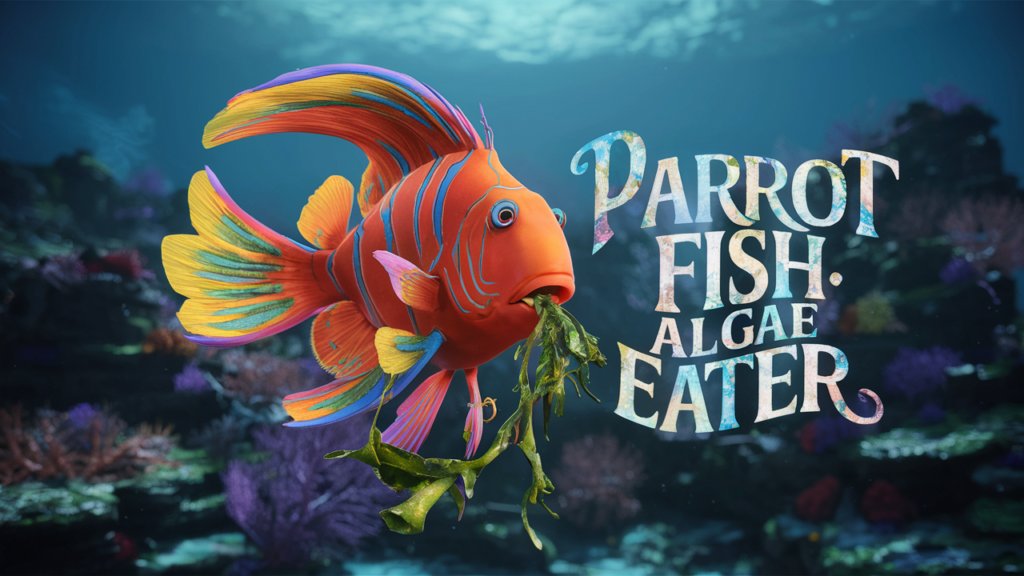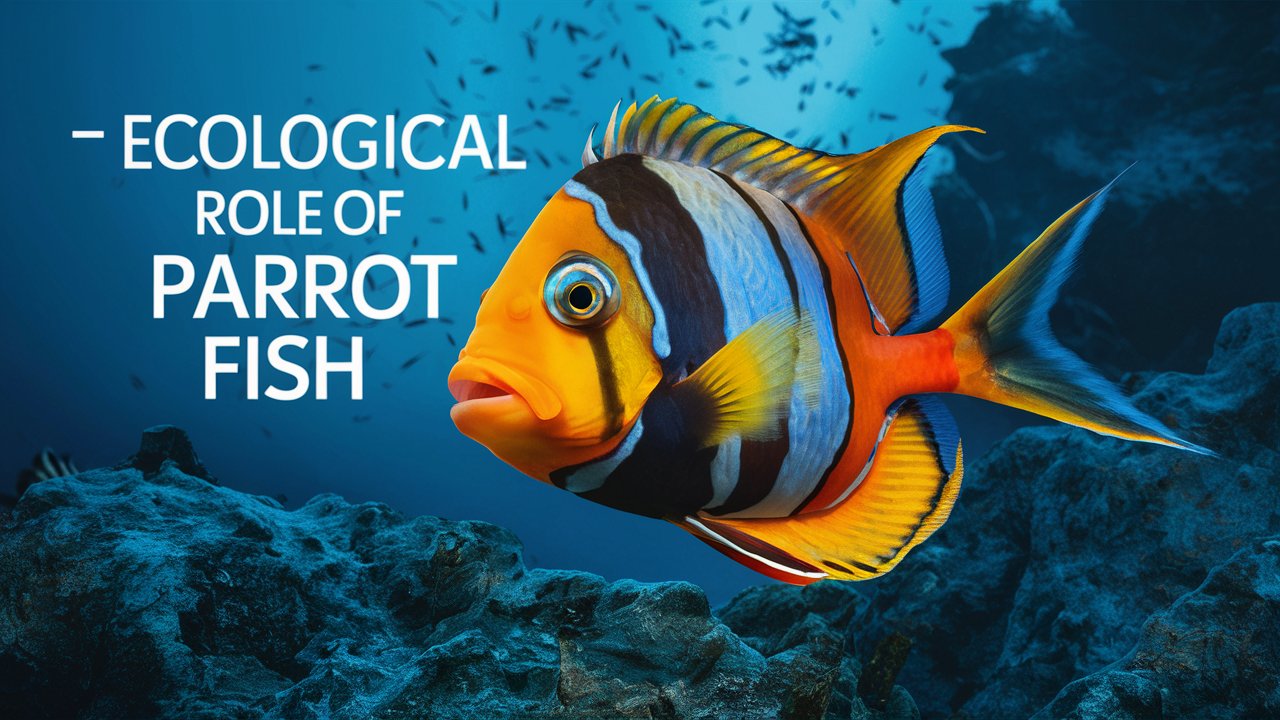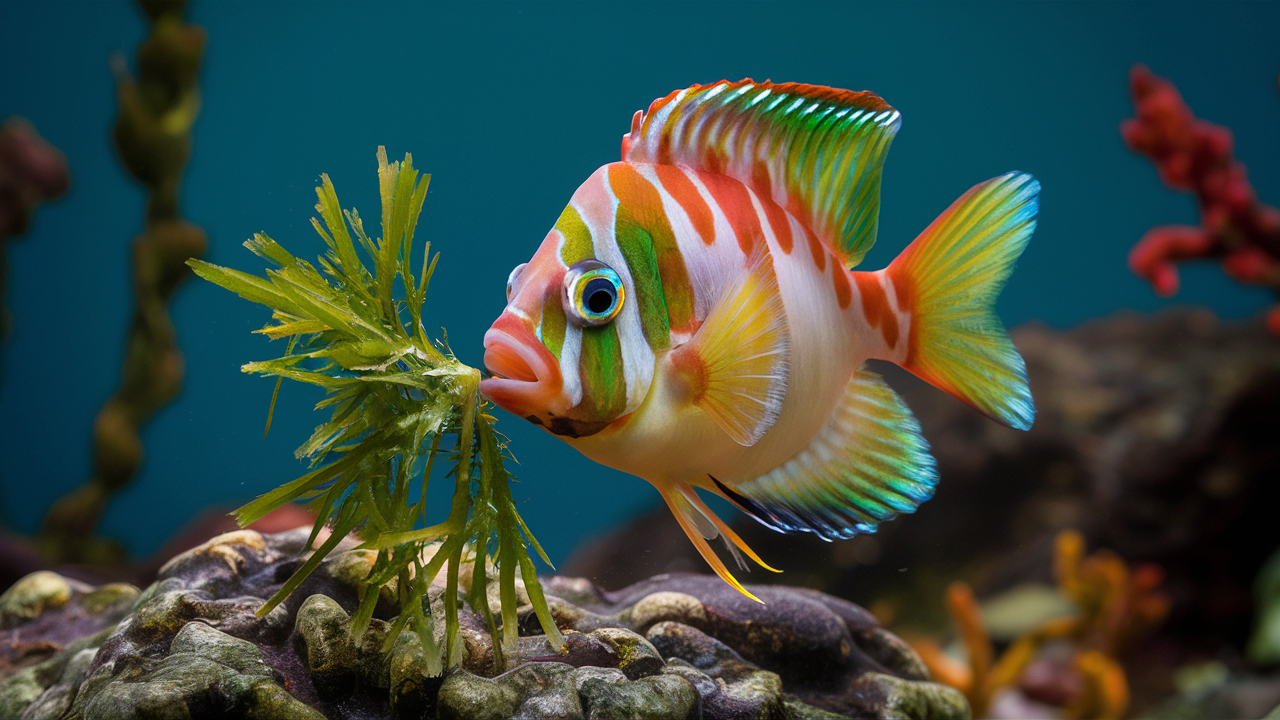What Do Parrot Fish Eat?
Introduction
Parrot fish are fascinating marine creatures known for their vibrant colors and beak-like teeth. Understanding what do parrot fish eat is crucial for appreciating their role in marine ecosystems and ensuring their well-being in captivity. This article will delve into the diet of parrot fish, exploring their natural food sources, feeding habits, and the impact of their eating patterns on their environment.
Overview of Parrot Fish
Physical Characteristics
Parrot fish are named for their unique dental structure, which resembles a parrot’s beak. This beak is actually fused teeth that allow them to scrape algae and other food off hard surfaces. They come in a variety of bright colors, often changing hues as they mature, which makes them a favorite among divers and marine enthusiasts.
Habitat and Distribution
Parrot fish are predominantly found in tropical and subtropical waters around coral reefs. Their distribution spans the Atlantic, Indian, and Pacific Oceans, where they play a significant role in the health of coral reef ecosystems.
Types of Parrot Fish
There are nearly 90 species of parrot fish, each with unique characteristics. Some common types include the Stoplight Parrotfish, the Rainbow Parrotfish, and the Queen Parrotfish. Each species may have slightly different dietary preferences, but they all share a common reliance on certain key food sources.
Understanding Parrot Fish Diet
Natural Diet in the Wild
In their natural habitat, parrot fish are primarily herbivores. They feed on algae, coral, and small invertebrates. Their diet is highly influenced by the availability of these resources in their environment.
Dietary Preferences
While parrot fish are known to eat a variety of foods, algae make up the bulk of their diet. They have a particular preference for turf algae, which they scrape off rocks and coral with their beak-like teeth. They also consume coral polyps, sponges, and other small organisms found in their habitat.
Feeding Behavior and Techniques
Parrot fish use their beak-like teeth to scrape and bite off pieces of coral and algae. This scraping action not only helps them feed but also aids in the process of bioerosion, breaking down coral and contributing to sand production on reefs.
Components of Parrot Fish Diet
Algae
Types of Algae Consumed
Parrot fish consume various types of algae, including turf algae, macroalgae, and filamentous algae. Turf algae, a low-lying form of algae that grows on dead coral and rocks, is particularly favored by many parrot fish species.

Nutritional Benefits of Algae
Algae are rich in nutrients, providing essential vitamins, minerals, and proteins that parrot fish need for growth and reproduction. The consumption of algae helps maintain the balance of the reef ecosystem by preventing overgrowth that can smother corals.
Coral and Coral Polyps
Role of Coral in Diet
While algae are the primary food source, many parrot fish species also feed on coral polyps. This might seem detrimental to coral reefs, but it plays a role in controlling coral growth and promoting reef diversity.
Impact on Coral Reefs
Parrot fish feeding on coral can help control the spread of certain coral species, allowing for a more diverse and resilient reef system. However, overfishing of parrot fish can lead to an imbalance, resulting in coral overgrowth and reef degradation.
Invertebrates
Types of Invertebrates Eaten
Parrot fish occasionally consume small invertebrates such as crustaceans and mollusks. These are usually ingested incidentally while they are feeding on algae and coral.
How They Obtain Invertebrates
As parrot fish scrape surfaces for algae, they often encounter and consume small invertebrates living within the algae or coral matrix. This incidental ingestion provides additional protein and nutrients.
Other Plant Material
Seaweed and Seagrasses
In addition to algae, some parrot fish species also feed on seaweed and seagrasses. These plant materials provide additional fiber and nutrients, supporting their overall health.
Importance of Plant Diversity
A diverse diet including various types of plant material ensures that parrot fish receive a balanced range of nutrients. This dietary diversity helps support their immune system and reproductive health.
Feeding Habits and Patterns
Diurnal Feeding
Parrot fish are primarily diurnal feeders, meaning they are most active during the day. They spend their days grazing on algae and coral, often moving in small groups across the reef.
Seasonal Variations
The diet of parrot fish can vary seasonally based on the availability of food resources. During certain times of the year, specific types of algae or coral may be more abundant, influencing their feeding patterns.
Impact of Environmental Factors
Environmental factors such as water temperature, nutrient levels, and human activities can significantly impact the availability of food for parrot fish. Changes in these factors can alter their diet and feeding behavior.
Parrot Fish in Captivity
Replicating Natural Diet
In captivity, it is important to replicate the natural diet of parrot fish to ensure their health and longevity. This can be challenging but is achievable with a mix of fresh and prepared foods.
Commercial Foods
There are various commercial foods available for parrot fish, including pellets and frozen foods designed to mimic their natural diet. These often contain a mix of algae, seafood, and plant material.
Feeding Frequency and Amount
Feeding parrot fish in captivity requires attention to frequency and portion sizes. Typically, they should be fed small amounts multiple times a day to replicate their natural grazing habits.
Ecological Role of Parrot Fish

Maintaining Coral Reef Health
Parrot fish play a crucial role in maintaining the health of coral reefs. By feeding on algae, they prevent algae overgrowth, which can suffocate corals and disrupt the balance of the reef ecosystem.
Contributions to Sand Production
One of the lesser-known roles of parrot fish is their contribution to sand production. The coral they consume is ground up in their digestive system and excreted as fine sand, helping to build and maintain sandy beaches.
Interactions with Other Marine Species
Parrot fish interact with a variety of marine species, from small invertebrates to large predators. Their feeding habits can influence the distribution and abundance of other reef organisms, contributing to the overall biodiversity of the reef.
Human Interaction and Impact
Fishing and Consumption
Parrot fish are often targeted by fisheries for their meat, which is considered a delicacy in many cultures. Overfishing can lead to population declines and negatively impact reef health.
Conservation Efforts
Efforts to conserve parrot fish populations include establishing marine protected areas, enforcing fishing regulations, and promoting sustainable fishing practices. These measures help ensure the long-term survival of parrot fish and the health of coral reefs.
Importance of Sustainable Practices
Sustainable practices in fishing and reef management are crucial for preserving parrot fish populations and their habitats. Educating communities about the ecological role of parrot fish can promote more sustainable interactions with these important marine creatures.
Conclusion
Parrot fish are vital to the health and balance of coral reef ecosystems. Understanding their diet and feeding habits is essential for their conservation and the preservation of their habitats. By appreciating the complexity of their dietary needs and the impact of their feeding behavior, we can better protect these colorful and important marine fish.
FAQs
What is the primary food source for parrot fish?
The primary food source for parrot fish is algae, which they scrape off rocks and coral with their beak-like teeth. They also consume coral polyps, small invertebrates, and other plant material.
How do parrot fish contribute to coral reef ecosystems?
Parrot fish contribute to coral reef ecosystems by controlling algae growth, which helps prevent algae from smothering corals. They also produce sand through the digestion of coral, which helps build and maintain beaches.
Can parrot fish be kept as pets?
While parrot fish can be kept in large marine aquariums, they require specific care to replicate their natural diet and environment. They are best suited for experienced aquarists due to their specialized needs.
What challenges do parrot fish face in the wild?
Parrot fish face challenges such as overfishing, habitat destruction, and climate change, which can affect their food sources and living conditions. Conservation efforts are essential to address these challenges.
How does climate change affect parrot fish?
Climate change can impact parrot fish by altering water temperatures and coral reef health, affecting the availability of their food sources. Rising sea temperatures and ocean acidification can lead to coral bleaching and degradation, impacting the entire reef ecosystem.
